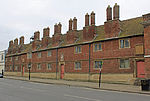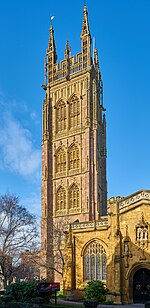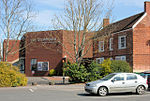Taunton Priory
1110s establishments in England1539 disestablishments in EnglandAugustinian monasteries in EnglandBuildings and structures in TauntonChristian monasteries established in the 12th century ... and 2 more
History of TauntonMonasteries in Somerset

Taunton Priory, or the Priory of St Peter and St Paul, was an Augustinian house of canons founded c. 1115 by William Gyffarde (also called William Giffard), Bishop of Winchester and Chancellor of England near Taunton, Somerset, England.
Excerpt from the Wikipedia article Taunton Priory (License: CC BY-SA 3.0, Authors, Images).Taunton Priory
Gyffarde Street,
Geographical coordinates (GPS) Address Nearby Places Show on map
Geographical coordinates (GPS)
| Latitude | Longitude |
|---|---|
| N 51.018083 ° | E -3.098198 ° |
Address
Gyffarde Street
Gyffarde Street
TA1 1JX , Firepool
England, United Kingdom
Open on Google Maps










